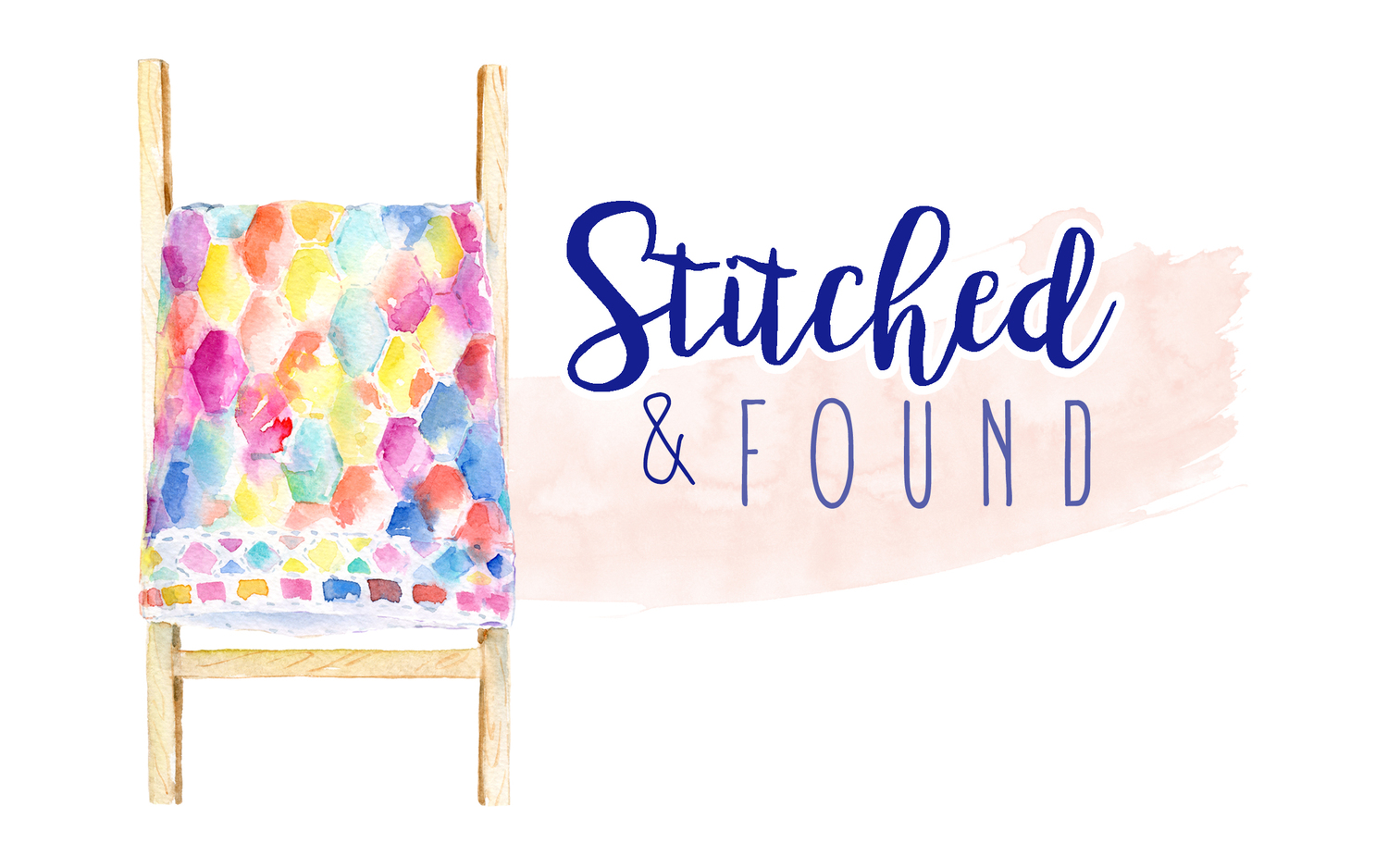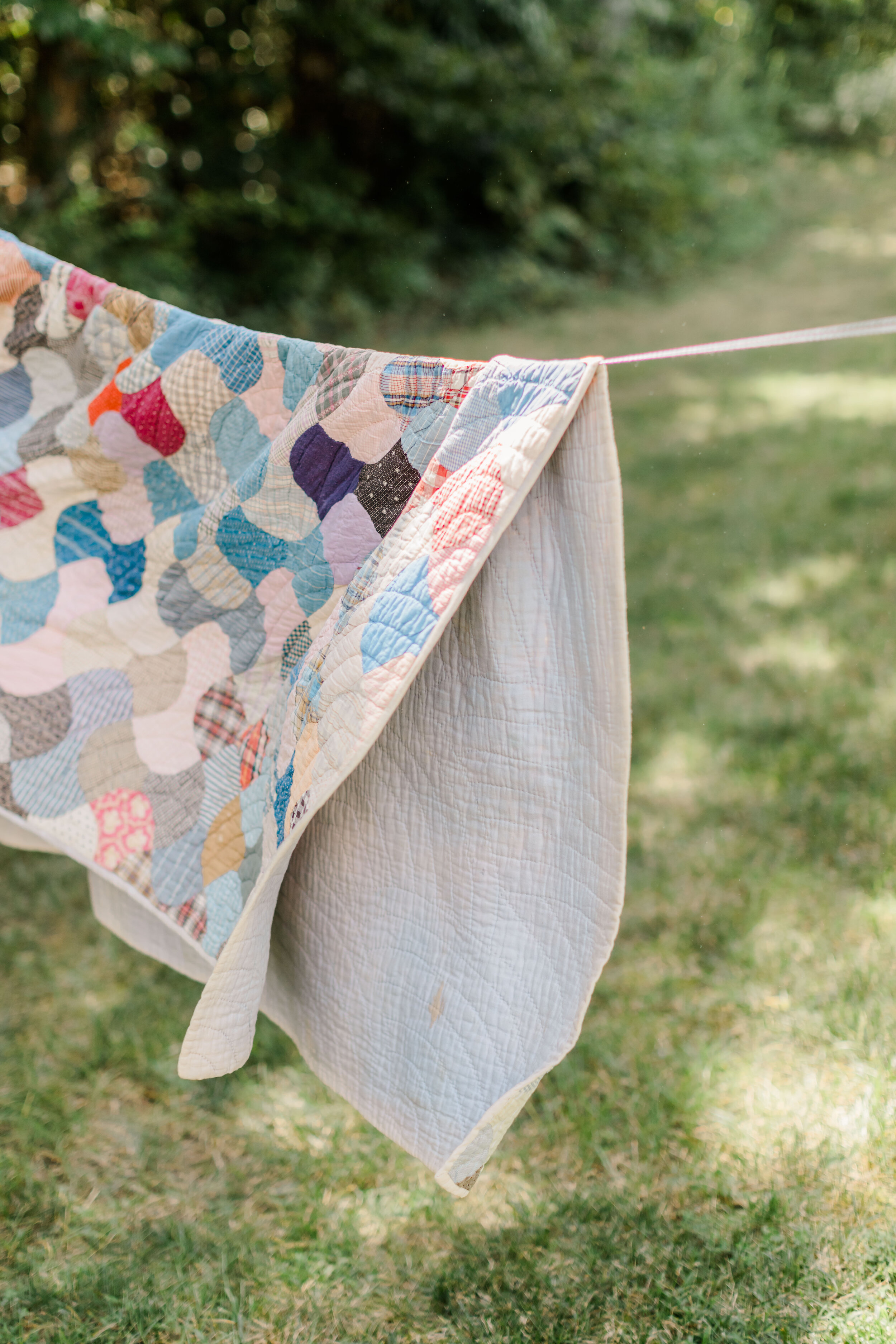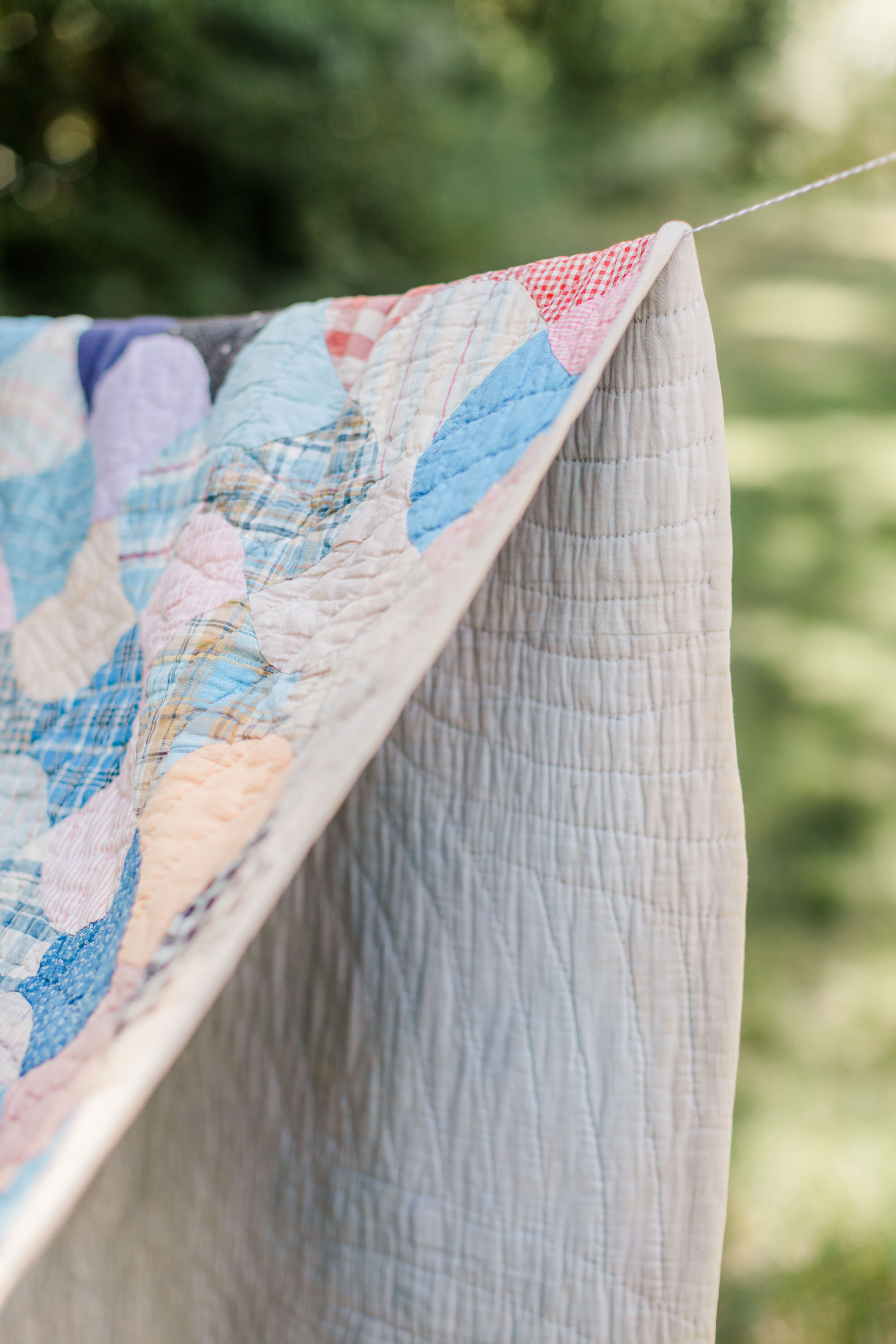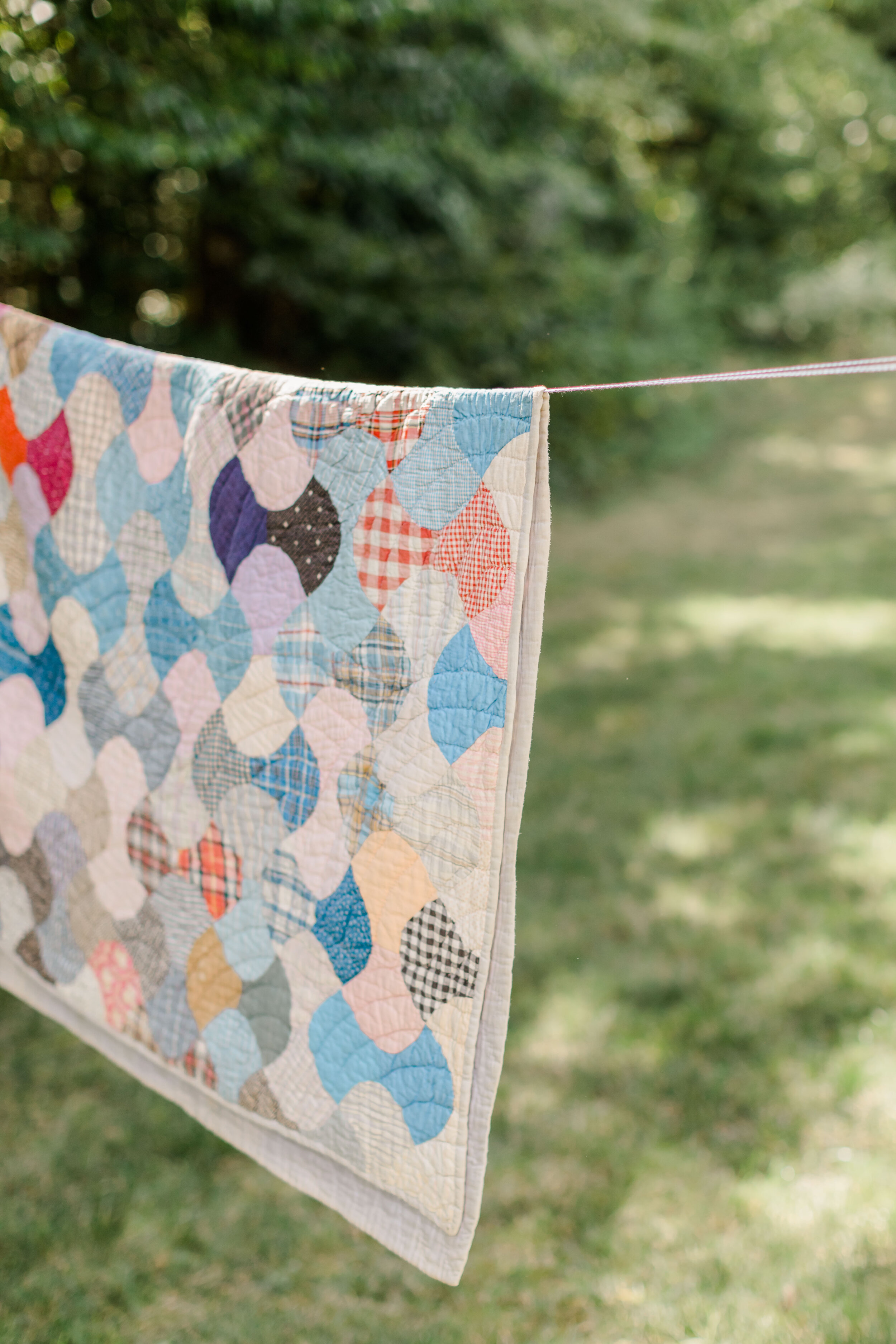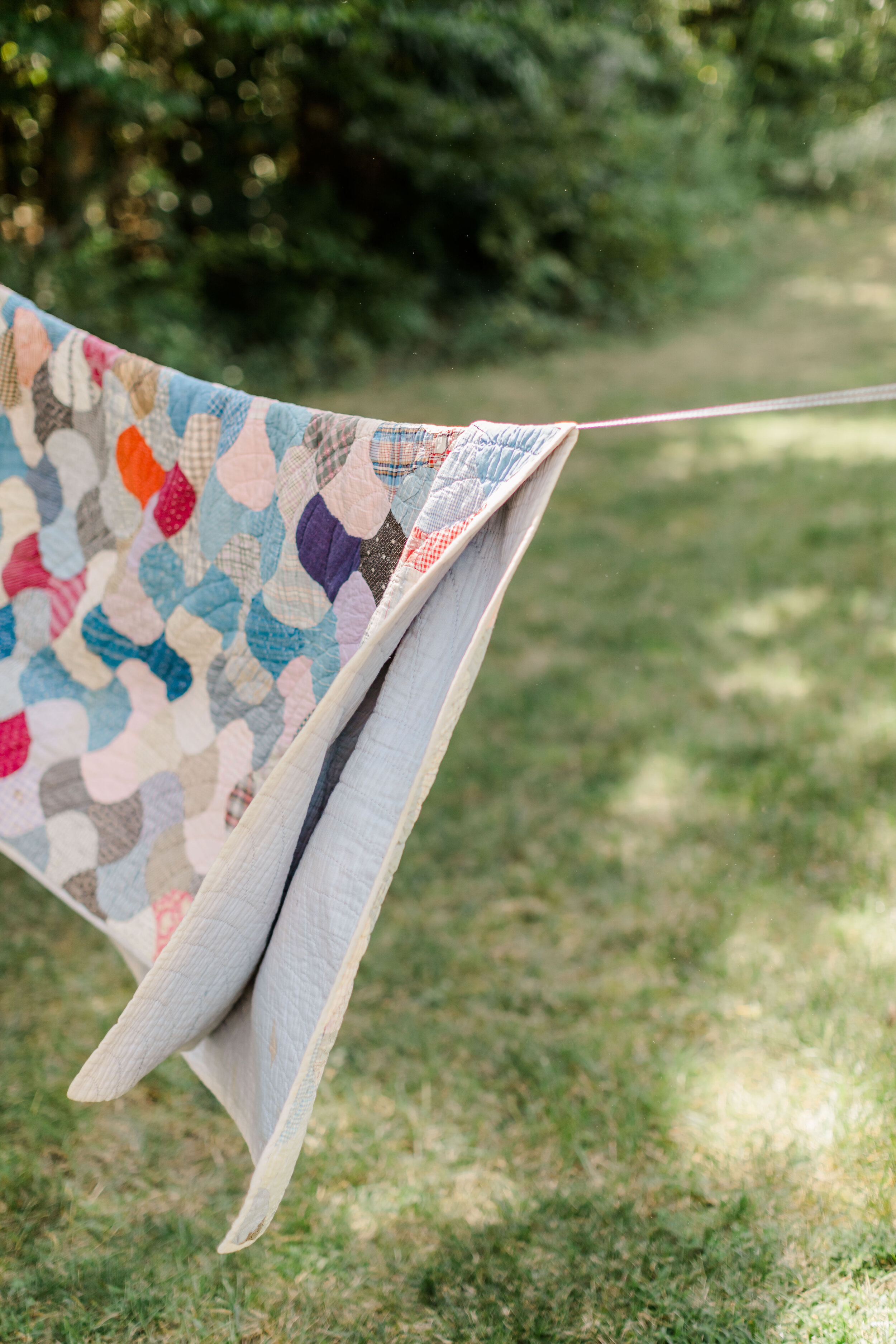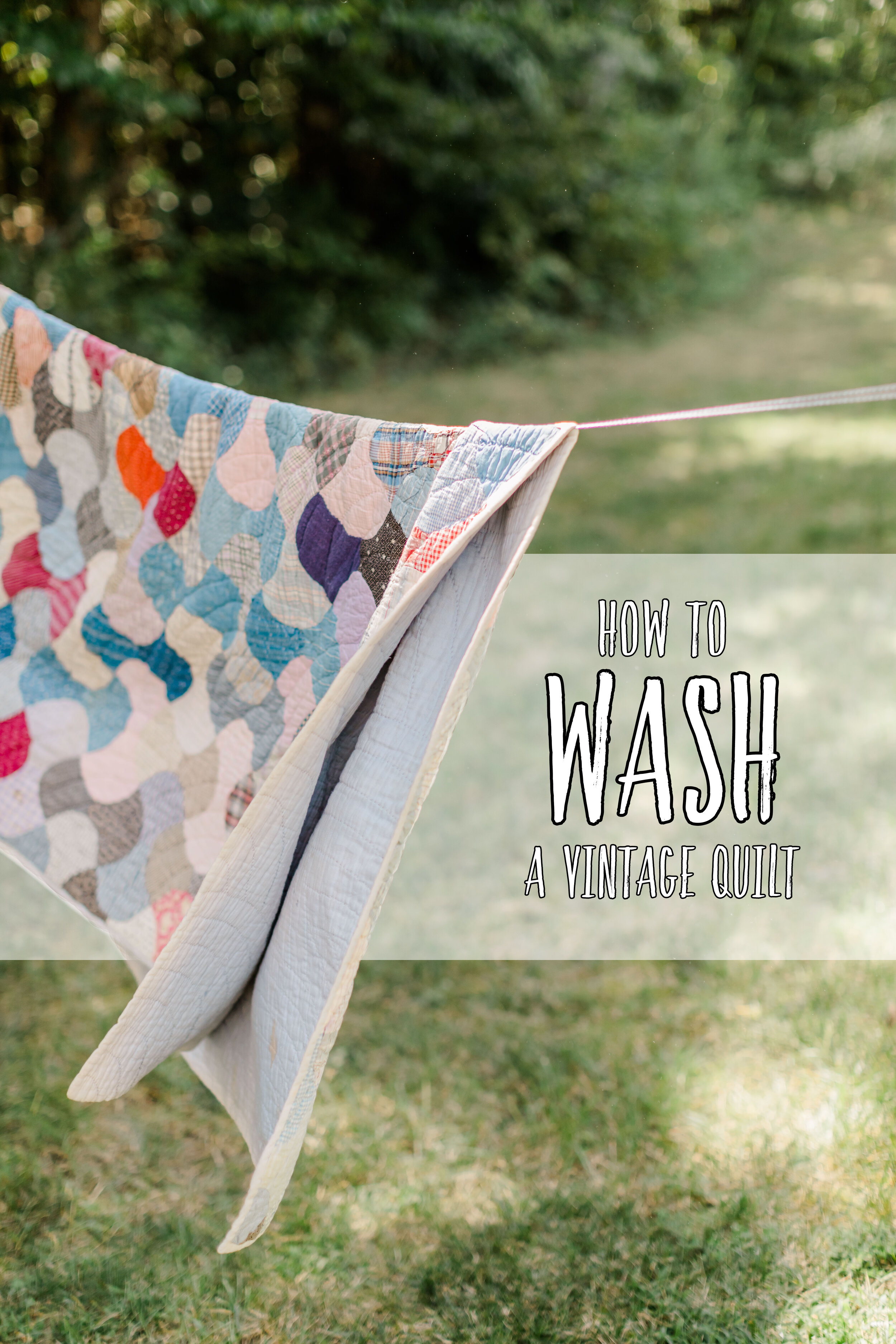I use many of my quilts daily. Some I only display. For those I cover up with on the couch or lay my children on, I want to make sure they are clean. If I am going to cuddle under it, it has to smell nice.
But, washing a vintage quilt comes with a lot of risk. You are handling a piece of art that possibly already has some damage to it. There are so many factors to consider before you decide to clean your new treasure.
No matter the condition of your quilt, there is always a risk of messing it up. Any method I list below could result in tearing fabrics or color bleeding fabrics. Every step is DO AT YOUR OWN RISK.
The Easiest Way:
Washing your quilt in your machine washer on the gentlest cycle. This is more dangerous because a machine is washing your quilt and you have no control over what happens in there. If your quilt is in good condition with little to no wear, I don’t personally think it is the end of the world to pop it in the washer (others will greatly disagree here). This method will probably not remove stains as well either.
To me, it feels cleaner out of the washer than soaking it in the tub. If it is one I want to cuddle on the couch with, I am willing to risk a little of the integrity of the quilt to feel like it is cleaner (ALL PERSONAL PREFERENCE).
The Harder (but more effective) Method:
Soaking in a tub is universally the most advertised method for cleaning a vintage quilt. When you decide to soak, I recommend laying a sheet in the bottom of your tub first. This will help you to lift the super heavy, water saturated quilt from the water without tearing the fragile fabrics. When you soak, I recommend letting it soak for several days. Use whatever desired detergent you want, I personally use Oxy Clean. I empty and re fill the water/detergent everyday until the water isn’t dirty anymore.
Drying
You can always throw your wet, clean quilt in the dryer, but it will probably worsen any tears your quilt already has. The dryer is also bad to knot up the batting inside of quilts. The best way to dry a quilt is by hanging it outside to dry in the SUN. The sunshine is a natural deodorizer, stain remover, and fabric freshener. If you live somewhere where you can’t hang it outside, hang it over some chairs inside, maybe under a ceiling fan.
Color Bleeding
If you are worried about the fabrics in your quilt bleeding (reds, deep blues, pinks, greens, any color), grab a pack of Color Catchers. Throw one or ten into your washer/tub to soak up any colors that may leak (this isn’t fool proof though and may not always work 100%). If your quilt has already bled from a previous washing, google “How to Save my Bleeding Quilt!”.
Other Follower Recommendations:
Many people recommend a product called Retro Clean. But also as many people that sweared by it also said to never ever ever use it! I think this product is best for quilts that have a lot of white that is dingy and needs refreshing. It isn’t ideal for quilts with a lot of color, especially colors that could easily bleed. It is known to strip colors. Use this product with caution (I still wanted to mention it because it has worked miracles on so many quilts).
Don’t be scared to wash your quilt. To me, it is dumb to have a quilt you can’t use because you are scared of messing it up. If you have more questions, feel free to ask!
